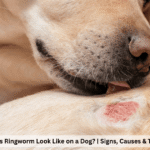Gum shields, also known as mouthguards, are essential protective gear for athletes, particularly those involved in contact sports such as rugby, boxing, or hockey. They safeguard your teeth, gums, and jaw from impact injuries, but their role in oral protection comes with a responsibility: keeping them clean. Cleaning gum shields regularly is vital to prevent bacterial buildup, bad odors, and potential oral health issues. Today, we’ll explore why cleaning gum shields is crucial, provide step-by-step instructions on how to clean a gum shield, and share expert tips to ensure your mouthguard remains hygienic and durable.
Why Cleaning Gum Shields Matters
A gum shield spends hours in your mouth, exposed to saliva, sweat, and sometimes blood or debris from sports activities. Without proper cleaning, it can become a breeding ground for bacteria, fungi, and mold, leading to infections like gingivitis or thrush. Poor mouthguard hygiene can also cause bad breath, discoloration, and a shortened lifespan for the gum shield. By mastering how to clean a gum shield, you ensure it remains safe, odor-free, and effective for long-term use.
Neglecting cleaning gum shields can have consequences beyond oral health. A dirty gum shield may develop an unpleasant taste or smell, making it uncomfortable to wear. Over time, bacterial buildup can degrade the material, reducing its protective capabilities. For athletes, maintaining oral protection is as critical as wearing the gum shield itself. A clean gum shield not only promotes mouthguard hygiene but also boosts confidence during performance, knowing your gear is fresh and safe.
How to Clean a Gum Shield: Step-by-Step Guide
Here’s a detailed guide on how to clean a gum shield using simple, safe, and effective methods. These steps incorporate everyday household items and specialized cleaning products to ensure thorough cleaning gum shields.
Step 1: Rinse Immediately After Use
After every use, rinse your gum shield under cold or lukewarm water to remove saliva, debris, and bacteria. Avoid hot water, as it can warp the material, especially for custom-fitted gum shields. This initial rinse is a crucial part of cleaning gum shields, as it prevents contaminants from settling into the material. Hold the gum shield under running water for 15–20 seconds, gently rubbing it with your fingers to dislodge particles.
Step 2: Brush with a Soft Toothbrush
Use a soft-bristled toothbrush and a small amount of non-abrasive toothpaste to clean your gum shield. Brush gently to avoid scratching the surface, focusing on crevices where bacteria may hide. This step enhances mouthguard hygiene by removing stubborn debris and surface stains. For a deeper clean, you can use a mild dish soap instead of toothpaste, as it’s effective at disinfecting gum shields without damaging the material.
Step 3: Soak in a Cleaning Solution
Soaking is a key component of how to clean a gum shield thoroughly. You can use one of the following solutions:
- Mouthwash Solution: Mix equal parts of water and alcohol-free mouthwash. Soak the gum shield for 5–10 minutes to kill bacteria and freshen it. Alcohol-free mouthwash is gentler on the material and supports maintaining oral protection.
- Hydrogen Peroxide Solution: Dilute 3% hydrogen peroxide with water (1:1 ratio) and soak the gum shield for 10 minutes. This is excellent for disinfecting gum shields and removing odors.
- Specialized Mouthguard Cleaner: Commercial cleaners designed for cleaning gum shields are available in tablet or spray form. Follow the product instructions, typically soaking for 5–15 minutes.
After soaking, rinse the gum shield thoroughly to remove any cleaning solution residue.
Step 4: Dry Thoroughly
After cleaning gum shields, dry them completely before storage. Use a clean, dry cloth to pat the gum shield dry, then let it air-dry in a well-ventilated area. Avoid direct sunlight or heat sources, as they can deform the material. Proper drying prevents mold growth and maintains mouthguard hygiene.
Step 5: Store Properly
Store your gum shield in a ventilated, hard case to protect it from dust and bacteria. Avoid sealed plastic bags or containers, as they trap moisture and encourage bacterial growth. Proper storage is an essential part of maintaining oral protection and extending the gum shield’s lifespan.
Deep Cleaning Gum Shields: Weekly Maintenance
For optimal mouthguard hygiene, perform a deep clean once a week. This involves a more thorough approach to cleaning gum shields to tackle stubborn stains, odors, or buildup. Here’s how:
- Vinegar Soak: Mix equal parts white vinegar and water, then soak the gum shield for 15–20 minutes. Vinegar is a natural disinfectant that excels at disinfecting gum shields and removing stains. Rinse thoroughly afterward to eliminate the vinegar taste.
- Baking Soda Paste: Create a paste with baking soda and water, then apply it to the gum shield with a toothbrush. Scrub gently, then rinse. Baking soda neutralizes odors and supports cleaning gum shields effectively.
- Effervescent Tablets: Denture cleaning tablets or specialized mouthguard cleaning tablets are convenient for deep cleaning. Dissolve a tablet in water, soak the gum shield for the recommended time (usually 10–15 minutes), and rinse well.
Deep cleaning ensures your gum shield remains free of harmful microbes, enhancing both hygiene and comfort.
Common Mistakes to Avoid When Cleaning Gum Shields
While learning how to clean a gum shield, avoid these pitfalls to prevent damage and maintain effectiveness:
- Using Hot Water: High temperatures can warp or melt the gum shield, compromising its fit and protective abilities.
- Using Harsh Chemicals: Bleach or abrasive cleaners can degrade the material and irritate your mouth. Stick to mild soaps or specialized cleaners for cleaning gum shields.
- Skipping Regular Cleaning: Failing to clean after each use allows bacteria to accumulate, reducing mouthguard hygiene.
- Improper Storage: Storing a wet gum shield in a sealed container promotes mold growth. Always dry thoroughly and use a ventilated case.
By avoiding these mistakes, you ensure your gum shield remains safe and functional, supporting maintaining oral protection.
Tips for Maintaining Gum Shield Longevity
To maximize the lifespan of your gum shield and ensure optimal mouthguard hygiene, follow these tips:
- Clean After Every Use: Consistent cleaning gum shields prevents buildup and extends their usability.
- Inspect Regularly: Check for signs of wear, such as cracks or thinning material. Replace damaged gum shields to maintain oral protection.
- Avoid Chewing: Chewing on your gum shield can cause tears or deformities, reducing its effectiveness.
- Replace When Needed: Depending on usage, gum shields typically last 6–12 months. Replace them if they show significant wear or no longer fit properly.
Choosing the Right Gum Shield for Easy Cleaning
Not all gum shields are created equal, and some are easier to clean than others. Custom-fitted gum shields, molded by a dentist, often have smoother surfaces, making cleaning gum shields simpler. Stock or boil-and-bite gum shields may have more crevices, requiring extra care during cleaning. When selecting a gum shield, prioritize materials like EVA (ethylene-vinyl acetate), which are durable and easy to clean, supporting maintaining oral protection.
FAQs About Cleaning Gum Shields
How often should I clean my gum shield?
Clean your gum shield after every use to prevent bacterial buildup. Perform a deep clean weekly for optimal mouthguard hygiene.
Can I use bleach to clean my gum shield?
No, bleach is too harsh and can damage the gum shield or irritate your mouth. Use mild soaps, mouthwash, or specialized cleaners for cleaning gum shields.
How do I remove stubborn stains from my gum shield?
Soak in a vinegar-water solution or use a baking soda paste to tackle stains while disinfecting gum shields.
How do I know when to replace my gum shield?
Replace your gum shield if it shows signs of wear, such as cracks, tears, or a loose fit, to ensure maintaining oral protection.
Conclusion
Cleaning gum shields is a non-negotiable part of maintaining oral protection and ensuring your mouthguard remains hygienic and effective. By following the steps outlined in this guide rinsing, brushing, soaking, drying, and storing properly you can master how to clean a gum shield and keep it in top condition. Regular cleaning, combined with weekly deep cleaning and proper storage, prevents bacterial growth, odors, and material degradation. Avoid common mistakes like using hot water or harsh chemicals, and inspect your gum shield regularly to ensure it continues to protect your teeth and gums effectively. With these expert tips, you’ll maintain mouthguard hygiene, extend the lifespan of your gum shield, and perform confidently in your sport of choice.








